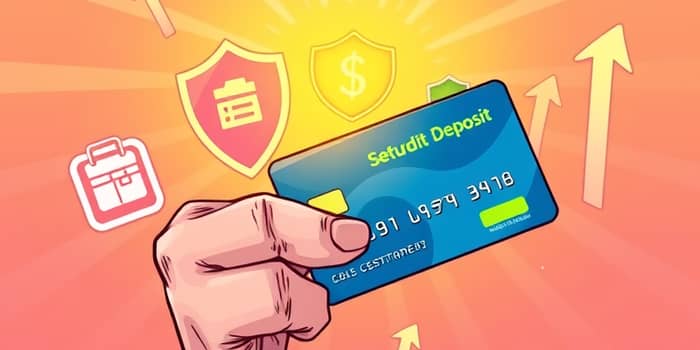Secured credit cards offer a powerful tool for anyone looking to build or rebuild credit in a safe, structured way. Whether you’re just starting your financial journey or recovering from past setbacks, these cards can serve as stepping stones toward greater financial freedom. By understanding how they work and leveraging their advantages, you can transform a simple credit product into a pathway for lasting credit health and confidence.
In this article, we’ll explore the definition, benefits, and practical strategies for effective use of secured credit cards. Along the way, you’ll discover tips to maximize your results and avoid common pitfalls, inspiring you to take control of your financial future.
What Is a Secured Credit Card?
A secured credit card is essentially a traditional credit card backed by a cash deposit provided by the cardholder. This deposit, which usually equals the credit limit, acts as collateral to protect issuers and makes approval easier for those with limited or damaged credit histories.
Functionally, secured cards work just like unsecured cards: you make purchases, carry a balance if you wish, and pay a monthly statement. Make timely payments and manage your balance wisely, and your issuer will report your activity to major credit bureaus. When you decide to close the account in good standing, your deposit is refundable, ensuring you don’t lose the funds you initially committed.
Key Benefits
Secured credit cards deliver a range of advantages that make them especially useful for credit newcomers or rebuilders. Below are the primary benefits to consider:
- Build or Rebuild Credit: Responsible use is reported to Experian, Equifax, and TransUnion, establishing a positive payment history.
- Lower Approval Threshold: Upfront deposit reduces risk for issuers, so approval is more accessible for those with poor credit.
- Access to Credit: Provides a purchasing tool for everyday expenses, reservations, and emergencies.
- Path to Unsecured Cards: Consistent on-time payments can lead to unsecured card offers in the future.
- Convenience and Security: Accepted anywhere major cards are honored, often with built-in fraud protection.
- Controlled Environment: Lower credit limits help manage spending and encourage responsible habits.
How Secured Credit Cards Help You Build Credit
One of the most compelling reasons to choose a secured credit card is the impact on your credit profile. When issuers report your monthly activity—payments made, balances carried, and credit utilization—they create a documented track record.
Payment History Matters: Paying at least the minimum due on time each month builds a positive history, which accounts for about 35% of your credit score. Paying in full avoids interest and preserves your deposit.
Credit Utilization: Experts recommend keeping your balance below 30% of your limit. For a $300 limit, aim to carry no more than a $90 balance.
Reporting to Bureaus: Not all secured cards report to every bureau. Choosing a reputable issuer that reports to all three major bureaus maximizes the boost to your credit file and accelerates your progress.
Additional Advantages
Beyond the core benefit of credit building, secured credit cards offer practical advantages in specific life scenarios.
Financial Backstop for Emergencies: Whether facing an unexpected car repair or medical bill, a secured card provides a ready backup when you need it most.
Essential for Reservations: Many hotels, car rental agencies, and online merchants require a credit card hold. A secured card can serve as your ticket to travel and online commerce.
Preparation for Major Loans: Planning for a mortgage, auto loan, or student loan? Establishing a positive credit history with a secured card can improve your chances of favorable interest rates and approval.
Tips for Effective Use
Secured cards can be powerful when used strategically. Follow these best practices to make the most of your card:
- Monitor Spending Regularly: Review statements and set alerts to avoid overspending.
- Pay in Full Each Month: Avoid interest charges and maintain a low utilization rate.
- Choose the Right Issuer: Confirm they report to all three credit bureaus and offer a refundable deposit.
- Stay Below 30% Utilization: Carrying a modest balance demonstrates discipline.
- Request an Upgrade: After six to twelve months of responsible use, inquire about graduating to an unsecured card.
Potential Drawbacks
While secured credit cards are beneficial, be aware of possible downsides before committing your funds.
- Upfront Deposit Required: You must set aside cash that could be used elsewhere.
- Lower Credit Limits: Limits are tied to deposits, which may restrict larger purchases.
- Fees and Rates: Some cards charge annual fees or have higher interest rates than unsecured options.
Summary Comparison
Conclusion
Secured credit cards stand out as a practical, accessible way to take charge of your credit health. By combining an upfront collateral deposit with disciplined use, you can lay a strong foundation for a positive credit history. Whether you’re embarking on your first financial steps or recovering from past challenges, these cards provide a structured environment that rewards responsible behavior.
Embrace the journey: start small, pay on time, and watch your credit score climb. Within months, you could be eligible for unsecured cards, lower interest rates, and greater financial opportunities. With patience and persistence, a secured credit card can be the catalyst that transforms your financial story.
References
- https://www.afbank.com/article/pros-and-cons-of-secured-credit-cards-explained
- https://www.equifax.com/personal/education/credit-cards/articles/-/learn/what-is-a-secured-credit-card-do-they-build-credit/
- https://www.debt.org/credit/cards/secured/
- https://www.capitalone.com/learn-grow/money-management/how-secured-credit-cards-work/
- https://bettermoneyhabits.bankofamerica.com/en/credit/build-credit-with-a-secured-credit-card
- https://coinlaw.io/credit-card-statistics/
- https://www.mtb.com/library/article/5-benefits-of-a-secured-credit-card
- https://www.investopedia.com/terms/s/securedcard.asp










